So let’s talk about social distancing for a moment, it’s still a thing and it’s led (at least for me) to an increase in mobile phone use daily. The pandemic has brought a lot of things to the attention of individuals and groups, but the two biggest I’ve seen is the importance of great connectivity and the extension of that is a good mobile phone at your side.
The downside to trying to review a mobile during the lockdown is that it can give a false impression of the phone. The battery does take a bit of a hammering but you can top up continually and there’s not a lot of angles I can make the lavender bush look exciting from.
Despite the social limitations currently in place, the chance to play with the Motorola G8 before release was too good to pass up. One thing that really stuck out to me early in the testing was just how much bang you get for your dollar.
The Motorola G series of phones has been a continual evolution of the mid-tier devices for a few years, really taking a bit of a spotlight with the G6 and continued to develop the line’s reputation. It’s a predictable buy now, you’re going to get a good phone that looks nice, performs admirably and doesn’t cost the earth — without the interference of an overly invasive skin on top of Android.
Given the market trends of late towards mid-range devices, perhaps 2020 isn’t just the year of isolation but also the year the Motorola G series phones go from mid-tier contender to a front runner in their field. Let’s take a closer look.
What’s inside?
If you’re a numbers junkie or a specs geek, you’ll recognise pretty quickly — if the price tag isn’t enough — that we’re talking about a middle of the road device. It’s not going to readily disappoint you, but it’s also not going to set your world ablaze with excitement.
The dimensions 161.27 x 75.8 x 8.95 mm make it of similar size to, well… most phones these days. The reduced size of bezels means that the 6.4-inch HD+ screen running 268PPI fits within the “water repellent” (IPX2) chassis along with 64GB of storage (expandable through MicroSD), 4GB RAM and a 4,000mAh battery.
We’ll explore battery life shortly, but if you’re in need of a quick top up – the 10W rapid charger can breathe life into your phone quickly. The general connectivity options are right on the money for a mid-tier phone. The offering encompasses connectivity of dual nano-SIM, handy if you (like me) have a second SIM.
Bluetooth 5, 802.11 b/g/n gives you good (but not top end) Wi-Fi connectivity but there’s no NFC for tap pay options and in this year of COVID-19 and many stores preferring contactless payment it is a huge omission by Motorola — I suppose for Motorola to hit that price point of $329 something had to give way — unfortunately it was an NFC chip. The phone is charged using the USB-C port and there are both a headphone Jack and FM Radio for entertainment.
The system is driven by a Snapdragon 665 processor, Adreno 610GPU and runs Android 10. The whole package weighs in at 188.3 grams and costs $329.00 at a variety of retailers, but the specs don’t really go close to telling the whole story.
What’s it good at?
There’s a lot about this phone that really makes it stand out in the pack. For me what really stands out is that fact that I don’t feel like I’m missing anything critical to my daily use with the G8 versus my normal phone.
The fingerprint reader is really good! It’s really fast to unlock the phone and rarely misfires on reading, but that does require you to take a bit of time with the setup process to ensure you’ve got a number of angles setup. The positioning of the reader is also very good, in the middle of the rear of the device about a quarter of the way down. Conveniently — I’m certainly not by accident — where your index finger drops when you pick up the device. This feels a bit like the Pixel XL from a few years ago and that honestly makes me happy — that was a great device and this feels just as good generally.
It’s not a surprise anymore when the mid-tier device manufacturers choose USB-C over MicroUSB. But it’s still worth a mention for users who are upgrading to a new phone since a lot of those users potentially will have half a dozen MicroUSB chargers lying around and will find it inconvenient to have to change their charging cables.
The price has come down in comparison to the G7 last year. Now instead of $399, you’ll only be outlying $329.00 for the Motorola G8 and honestly, for what you get, that’s a steal.
What’s it not so good at?
Although there’s nothing critical to my daily use case (particularly during lockdown) that would cause me to really can the G8, there’s a couple of missing features that I’d really much rather have than not. Sadly, neither are present on the G8 which does detract a little from the shine of an otherwise exceptional and cost-effective device.
The main issues I’ve had with the G8 is that the mobile signal is noticeably lower than other phones I’ve had. I’m on Telstra, where my OnePlus 7T would have full signal I’m down at least one bar with the G8. It hasn’t caused me any issues with connectivity yet, but if you’re in a fringe area and live on half signal or less then you may strike issues with coverage.
Let’s start with the big one, there’s no NFC and I know for a lot of users that’s a deal breaker right there. No NFC means no Google Pay. A local gym has tap entry where you can use your mobile phone to gain entry out of staffed hours — none of that with the Moto G8. For me, I’d really much prefer to have NFC for functions like Google Pay available and it does form an increasing part of my purchasing decision — as it does for many users these days.
A nice to have, but not necessary feature (that was present in last years model) is face unlock. When it works, it’s quick and easy but when it doesn’t it’s an aggravation. Perhaps based on feedback from the G7 reviews, Motorola decided not to offer the feature.
It worked pretty well, but was a bit slower than I would have hoped and about 15% of the time didn’t detect correctly so I had to use my PIN or fingerprint anyway.
And my final grumble about a phone that — for the price — is really punching above its weight is I’d like the screen to have been a bit higher resolution. During daily use, I didn’t feel like it detracted from the device capabilities but if you’re watching videos you do tend to notice the lower resolution when you’re used to a higher resolution screen.
The software
Let’s just go with I like it! Motorola has delivered a really solid version of Android 10 with no extra crap installed. Beyond what you would expect from a stock version of Android, the software is also well optimised for the hardware.
The experience you get with a stock version of Android is just a little smoother, sharper and feels purer. There’s no influence from the manufacturer in what they believe should be the user experience, it’s true to the core experience — similar to the Pixel experience.
The camera
We’re dealing with a phone that’s roughly 20% of the cost of the Samsung Galaxy S20 Ultra, is it only 20% as good? Heck no, Motorola delivered a camera that’s going to tick the boxes for a huge number of users.
The main camera is a 16MP f1.7 that takes some pretty good photos. The colour reproduction is really good, the auto-focus is good enough to trust in most situations and through the wonders of technology, does a bit of post capture enhancement. The main camera is backed up by two other lenses that provide features and light capture that enhance the final images.
- Laser Autofocus 8MP (f/2.2, 1.12 um pixel)
- 118º wide angle sensor 2MP dedicated macro lens (f/2.2, 1.75 um pixel)
There’s a host of features in the camera software that you’d expect from a phone in the current generation. There’s digital zoom (up to 8x) which works but is unremarkable. Burst shot works well but I found the time between photos to be a bit too slow. This is consistent with some of the minor shutter lag I experienced while chasing little people around to get some photos. The shutter lag isn’t too bad, importantly though its consistent so you can “workaround” it.
Auto smile capture is an interesting feature. Perhaps it should be called Cheesy Grin capture, it doesn’t pick up a smirk. It only works when you and everyone in the frame are beaming. The others are features you’d have seen on a really good camera phone two years ago and include: Portrait mode, Cutout, Panorama, Manual mode, RAW photo output, Active photos, Spot colour and Best shot.
The selfie camera is surprisingly capable for such a cheap phone. Its an 8MP front facing camera and it produces some very nice photos in good lighting and will illuminate the screen white in questionable lighting to fill the area and improve results. What I did notice though were a few areas where facial features looked a bit washed out, almost as if the surrounding area has been enhanced and the subject’s face was omitted from this enhancement. The photos aren’t bad results, it is just a noticeable flaw in some photos when you look for them.
Performance
At the end of my testing with the Motorola G8, I struggled to pick any major flaw in its performance as a whole. There were moments of lag where apps were slow to load and other little niggles. This is one of the trade-offs that you make buying a sub $350 phone vs $550 and up. Even the addition of an extra 4GB of RAM would be a welcome improvement to the performance, but it comes at a cost.
The biggest issue I had with performance was the time it took to re-render the screen if you changed orientation from Portrait to Landscape or back. It wasn’t horrid, but it was very clearly slower than other phones we’ve reviewed in the last 12 months.
All tolled, the G8 performed admirably during daily use, gave me great battery life with regular delivery of two days of battery when I had at least one quiet day. Needless to say with respect to the general performance of the device in daily use, I’m impressed and that’s before you take into account the $329 price tag.
Should you buy one?
Ultra premium devices are an increasing niche market. There are absolutely some users who can afford and want to have the bleeding edge hardware, but for the rest of us, migration is happening away from the top tier devices to the mid-range. Possibly fueled by the financial impact of the COVID-19 pandemic, the doors are open for players like Motorola to impact the market.
The G8 is a really good entry into the field. It’s a touch cheaper than last year’s phone possibly putting it into the entry-level category but it doesn’t have NFC, face unlock and the mobile signal is not as strong as it should be. Could the phone be “better’? Sure, but if you’re a power user, you’re unlikely to be considering the G8 as a viable option anyway.
For users who want something to just work there’s the consideration of reliable general performance day-to-day, a near-stock OS version and very decent camera performance. The G8 ticks all of these boxes exceedingly well.
At the end of the day, it’s pretty clear to me that the Motorola G8 offers a lot of bang for not a lot of dollars. If you’re shopping in the sub $400 price range for an outright phone, this phone deserves to be on your list despite the fact it only costs $329 through JB Hi-Fi, Officeworks, The Good Guys and Mobileciti.

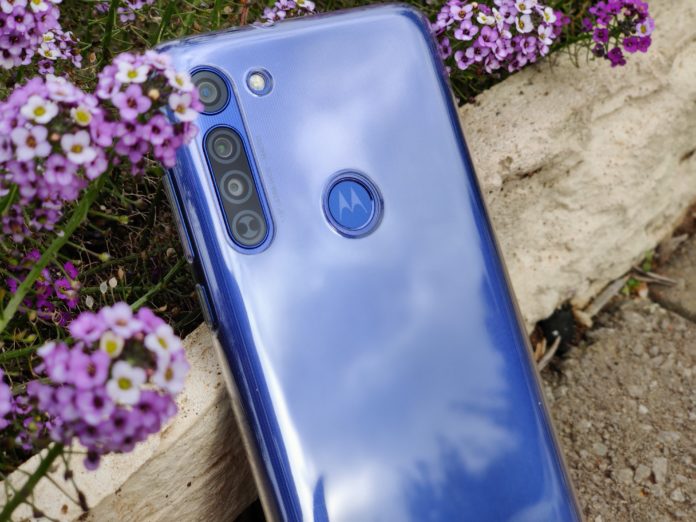



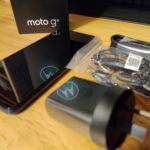
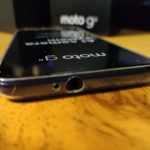





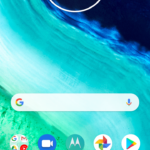
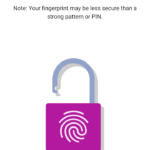
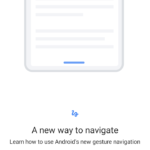
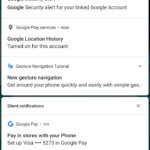
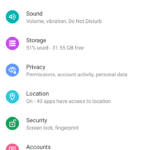


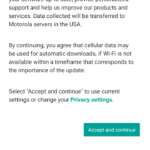











I own a G8 plus and it does have NFC and tap and Pay.
The Motorola G8 Plus that seems to be generally available (4/64GB $449 Officeworks, JB HiFi) has NFC, at least according to the Motorola website.
If I was in the market for a new phone to replace my Nokia 6.1, this Motorola would be a real contender. Despite my phones having had NFC capability since buying my LG G3 in March 2014, I’ve never actually wanted to use it. So the G8 not having NFC would not be a dealbreaker for me. The reception issues though, that’s a bigger concern. I regularly see my connection here drop to 1 bar on Optus on the Nokia, and on my Samsung tablet on Telstra. With the G8 possibly having worse reception, it could well wind up being… Read more »